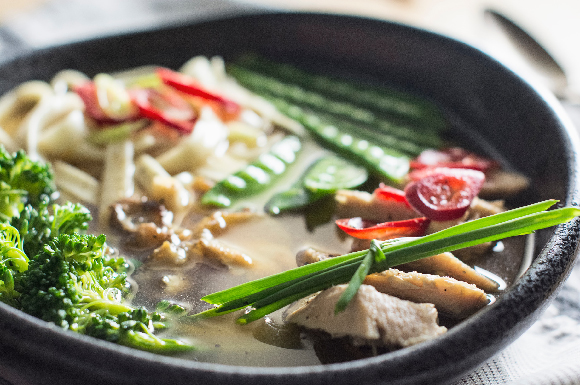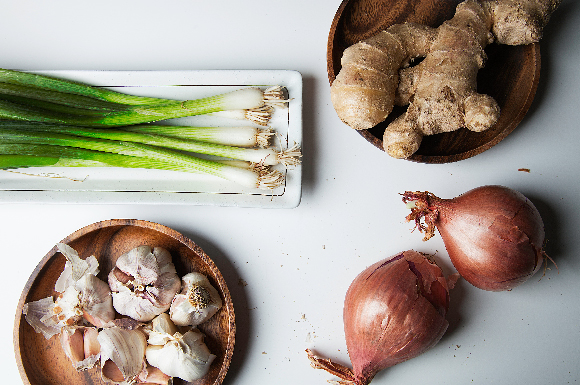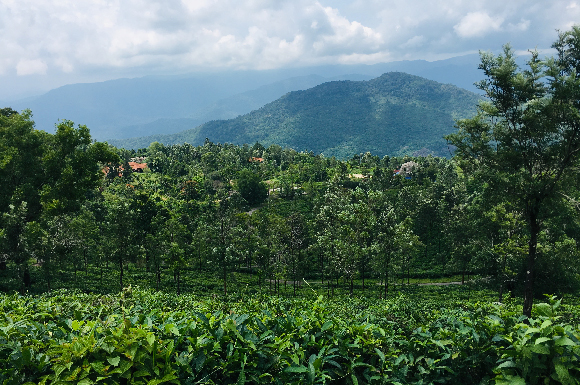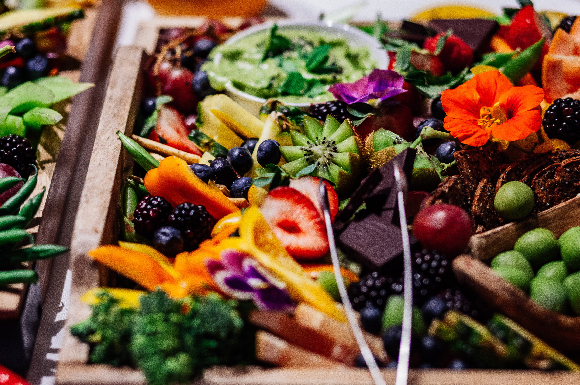Given the existence of a rich variety of plants that also serve as seasonal food in Portugal, It is easy to prepare meals everyday that brim with colors, contain 5 tastes and are both nutritious, flavourful, and enchanting. The collective wisdom of several communities renown for their longevity indicates that the more colors you bring to your dish, the better your health! Each of the ways we can prepare food also brings health and flavour in their own way, between cooking, cutting, fermenting and spicing, and many more.
As an example, cooking on a flame can create softer and calmer or more active and dynamic energy in food, depending on the flame used. The way food is handled – with love and care – is also important, resulting in food with more energy.
Relevant facts and figures:
Did you know that the more colours you have on your plate, the healthier the meal is likely to be? Phytochemicals give fruits and vegetables their vibrant colour and have unique immunity-building and disease fighting properties.

UMAMI
In 1908, Japanese scientist Kikunae Ikeda made an important discovery that would revolutionize the world of gastronomy. He teased out a new taste that was common to all the four previously known tastes: sweet, sour, bitter and salty but which was indistinguishably separate from them. He called this taste “umami”, which means “delicious” or “tasty” in Japanese.
Kikunae based his experiments on the preparation of the traditional Japanese culinary broth, Dashi, a centuries-old dish composed of dried seaweed (kombu), fish and/or dried shiitake mushrooms. Although the Japanese referred to the taste of this dish as UMAMI already 100 years ago, the UMAMI taste was only accepted internationally at the start of this century, when a group of researchers from the University of Miami published a study in the journal Nature Neuroscience that proved the presence of specific receptors of UMAMI taste on our tongues. The taste, UMAMI, is detected by glutamate receptors in the tongue. Foods such as tomatoes, parmesan cheese, shoyu and shiitake mushrooms contain monosodium glutamate which triggers these receptors.
Although UMAMI is very important in Asian cuisine, it is also present in a wide variety of foods and ingredients from various cuisines around the world. The variety of flavors in the dish is important as well as the colors and textures, all of which influence the digestive process.

KOKUMI
Similarly to how Umami was added to the reference taste modalities (bitter, sour, salty, sweet) as a fifth taste, and before that was for decades overlooked, would it be possible for there to exist a sixth taste modality?
Since the 80’s there’s been scientific research around a new taste modality named Kokumi. This flavour is believed to naturally occur in garlic, onions and scallops. Strongly found in a group of chemical compounds called γ-glutamyl-valyl-glycine, currently there isn’t a consensus around this being a sixth taste modality, still scientists are researching the receptor cells on the tongue, or another organ, that could detect and bring to life the sensation of Kokumi.

INFINITE DIVERSITY
Over centuries the science and art of Agriculture has found many expressions and Agroforestry, although ancestral, is one form of Agriculture that has only become known in recent years. If follows the principles of the forest: creating a thriving and organized environment for forest trees, fruit trees and horticultural produce to grow in the dance of natural succession! It is in this biodiversity that life truly thrives and all life forms are able to regenerate (including human life).
Making use of space and time to build the biggest variety of sizes, shapes, textures, aromas, colours, in trunks, branches, leaves and flowers, forests feed an almost infinite variety of microorganisms, fungi and animals, including us. It is this huge biodiversity that makes the macro-organism we call earth and us healthy. The rich diversity of fresh and live foods, vitamins, colours, textures and nutrients we feed on daily, contribute not only to our health but also to our resilience.

COLLATERAL BENEFITS OF QUARANTINE
My Daughter’s girlfriend moved in with us for CoVID-19 quarantine and had to adapt to our eating habits – essentially we are vegan. We are also very conscious about accessing all the nutrients we need to thrive in every meal and this is why every meal includes different colours, textures and flavours, ensuring we ingest the necessary vitamins, minerals, fibres and also enjoy the experience aesthetically. She had been used to eating quite a different diet: monochromatic meals including a large proportion of fish and meat and hardly any vegetables.
A few days into quarantine, sharing our diet, she admitted to me that she was actually very positively surprised with the effect the food we ate was having on her organism. It was as if her digestive system and well-being had completely transformed: she had suffered from chronic constipation and now she was able to have bowel movements once or twice every day. This was very liberating as it made her feel so much lighter and rest so much better!
